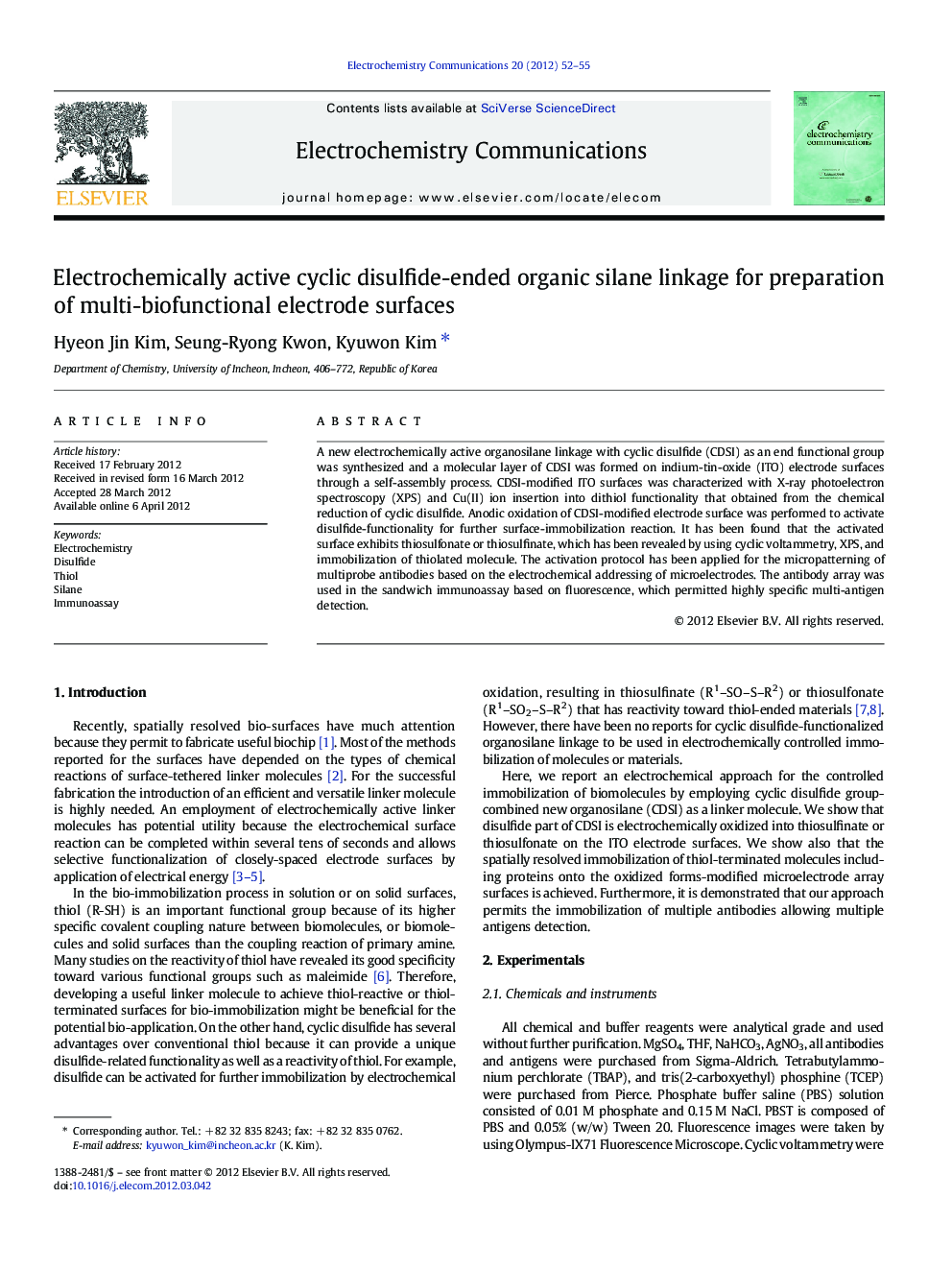| Article ID | Journal | Published Year | Pages | File Type |
|---|---|---|---|---|
| 179710 | Electrochemistry Communications | 2012 | 4 Pages |
A new electrochemically active organosilane linkage with cyclic disulfide (CDSI) as an end functional group was synthesized and a molecular layer of CDSI was formed on indium-tin-oxide (ITO) electrode surfaces through a self-assembly process. CDSI-modified ITO surfaces was characterized with X-ray photoelectron spectroscopy (XPS) and Cu(II) ion insertion into dithiol functionality that obtained from the chemical reduction of cyclic disulfide. Anodic oxidation of CDSI-modified electrode surface was performed to activate disulfide-functionality for further surface-immobilization reaction. It has been found that the activated surface exhibits thiosulfonate or thiosulfinate, which has been revealed by using cyclic voltammetry, XPS, and immobilization of thiolated molecule. The activation protocol has been applied for the micropatterning of multiprobe antibodies based on the electrochemical addressing of microelectrodes. The antibody array was used in the sandwich immunoassay based on fluorescence, which permitted highly specific multi-antigen detection.
Graphical abstractFigure optionsDownload full-size imageDownload as PowerPoint slideHighlights► A new silane linkage terminated with a cyclic disulfide was synthesized and immobilized on electrode surfaces. ► An electrochemical oxidation of the silane linkage produced thiol–reactive surfaces. ► Using the resulting surfaces, the immobilization of thiolated antibodies and the detection of multiple antigens were demonstrated.
